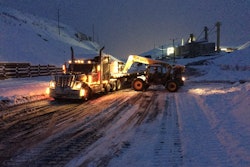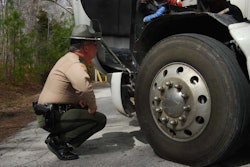Having spent a week virtually attending the Society of Automotive Engineers’ (SAE) Commercial Vehicle Congress (COMVEC) in parallel with the American Trucking Associations’ (ATA) Technology & Maintenance Council (TMC) fall meeting, I thought about the challenges of reaching agreements on new technology in trucking.
Industry group members are either funded for their advocacy work – that is most of the participants are in some way financed to participate – or they are volunteer-based organizations, and as Tennessee Williams’ Blanche said in A Streetcar Named Desire, “I have always depended on the kindness of strangers.” Some also may be called non-profits — there are legal definitions under IRS rules for that — but it doesn’t mean they don’t have objectives and financial considerations.
For the sake of full transparency, the North American Council for Freight Efficiency is a non-profit with a mission to drive the development and adoption of efficiency enhancing, environmentally beneficial, and cost-effective technologies, services and methodologies in the North American freight industry.
Volunteerism and funded advocacy interests are two forces helping push the ropes on technology adoption.
Organizations abound with objectives in the electrification (including battery electric and hybrids and fuel cells) and automation of trucking. These two technology areas are receiving a massive influx of funding from venture capitalist investors, companies and a variety of advocacy groups.
CALSTART, an advocacy group for clean transportation, lists more than 250 members supporting its efforts and is supported by membership dues, grants and various fees tied to administering programs like California’s HVIP program. CharIn, an industry group with the stated mission of “developing and establishing the Combined Charging System as the global standard for charging battery powered electric vehicles,” lists 202 paying members.
Organizations like TMC and SAE, while supported by industry, are populated primarily by volunteers from industry — both current employees and retirees. These volunteers generally do not officially represent their companies, only themselves, and generally are not directly paid to participate. While their company experience and company connections are critical to developing meaningful technology development and testing guidelines and standards, meetings usually start with an anti-trust declaration.
The challenges with both types of organizations is first finding qualified people to help make progress on anything, and keeping them engaged long enough to reach consensus on anything. The phrases “herding cats” and “pushing ropes” frequently are uttered by anyone who has had the fortune of leading these efforts. While it is relatively easy to reach agreement on broad goals, the devil is always in the details.
There is another major classification of technology promotion groups called regulators. The U.S. Environmental Protection Agency (EPA), the National Highway Traffic Safety Administration (NHTSA), The Federal Highway Administration (FHWA), Environment Canada (EC), The California Air Resources Board (CARB), are all examples of regulatory agencies that not only administer existing technology use, but have a role in defining future technology paths.
These groups have a lot of participants from direct employees, contractors, a variety of government interagency influencers, the courts, public and private advocacy groups, researchers, and more. Reaching agreement in these agencies usually has to follow rules such as a four year minimum statutory lead time, the need for a public comment period, the need for impact analyses and responses to public comments, etc.
Progress for all these groups measured in actionable agreements can be tracked in years. Maintaining a consistent group of contributors over years is inherently difficult as people change jobs for a variety of reasons. COVID-19 and the Great Recession of 2008-2009 are two extreme examples of mass employment change opportunities faced by these groups in the transportations arena. The Bureau of Labor Statistics estimates employee tenure in 2020 at a median of just 4.1 years. Tenure is defined as being with one employer, not counting departmental and division job changes under the same company. Clearly it is difficult to maintain attention spans on standards and guidelines when working on years of time frame.
Now, throw in the pace of technology innovation, where certainly weekly — sometimes daily — we are seeing new innovations from start-ups and established companies. Agreeing to anything by these various groups is akin to “building the plane while flying it,” a quote attributed to various authors over the years and probably adapted from Ray Bradbury in the context of a willingness to take risks.
Why lock into anything today when tomorrow we’ll find something new? Growth in product development usually starts with some radical innovation that eventually migrates to needing evolutionary development until the next revolution replaces it.
For trucks that last 10 to 20 years in North America, or longer if you are in Australia, taking a few years to reach agreement on anything was not that big a deal in the past. Today, with rapid technology innovation, years may be a death sentence to standards or agreements on technology development.
Pushing ropes is what the leaders of these groups have to do to make any progress. It’s a tough road. Thank those people when you see them, including anyone who has had the reins of a task force or tiger team where agreement was needed. They have earned that thank you.
Rick Mihelic is NACFE’s Director of Emerging Technologies. He has authored for NACFE four Guidance Reports on electric and alternative fuel medium- and heavy-duty trucks and several Confidence Reports on Determining Efficiency, Tractor and Trailer Aerodynamics, Two Truck Platooning, and authored special studies on Regional Haul, Defining Production and Intentional Pairing of tractor trailers.












